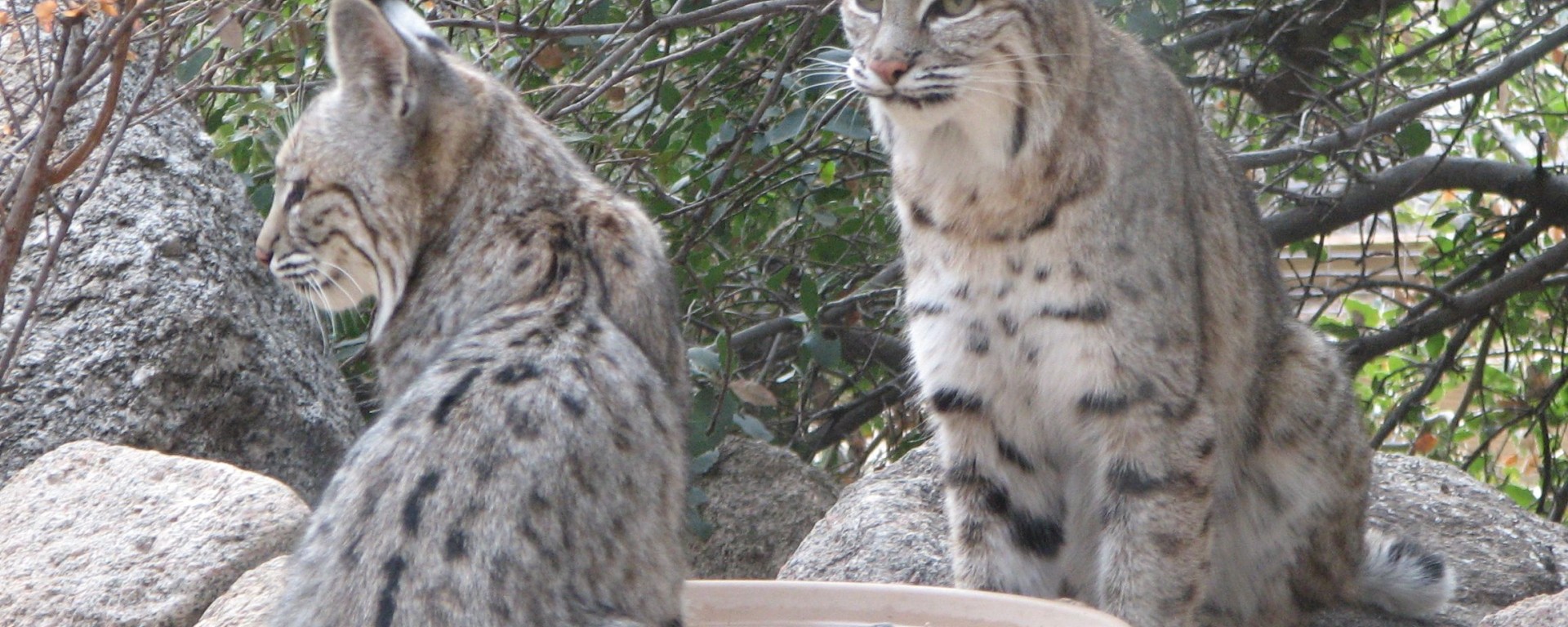BOBCATS
Of all the large predators living in or near Sandia Heights (aside from humans, of course, we have mountain lions, black bears, bobcats, and coyotes), the one we often see is the bobcat (Lynx rufus). The wild predators have lived here for eons, but only recently have humans invaded their territory by building houses and paving streets. It’s up to us to adapt to living in wildlife habitat, and that means we may need to change our habits in order to coexist with our wild neighbors. This article will focus on bobcats, but you can look forward to articles about other large predators in upcoming issues.
Like all predators bobcats are territorial, and typically have ranges of 4 to 10 square miles. They are solitary, with
males and females meeting only for mating. Kittens are born in the spring and stay with their mother for 9 to 12 months. About twice as large as a domestic house cat, bobcats usually weigh 15-30 pounds when full grown. The bobcat gets its common name from its short “bobbed” tail, 4 to 7 inches long. It has long legs and big paws. The coat color ranges from an orangeish brown to pale gray with black spots and bars on its legs and chest, and less distinct spots over its body. They have black streaks on their cheeks and sharp ears ending in tufts of black fur. Bobcats’ diet includes rabbits, mice, packrats, squirrels, birds, and sometimes insects. They rely on their keen eyesight and hearing to locate enemies and prey, as their sense of smell is not especially acute. Bobcats hunt by stealth, waiting motionless and then pouncing.
Bobcats pose no threat to humans, but they have been known to take domestic dogs and cats. Keep small dogs indoors and watch them carefully when they are out of doors. Cats should always be kept inside, as they will fall prey to bobcats (and other predators like coyotes, owls, and hawks) and may also become infected with plague if they catch infected rodents.
If you see a bobcat, there’s no need to call Animal Control or Game and Fish—just enjoy the sight of this fascinating and beautiful creature. If you would prefer not to have bobcats in your yard, then you should remove anything that might attract them, like bird baths, water features, and bird seed. Water is an obvious attractant, but bird seed attracts the animals bobcats eat, and bobcats go where the food is plentiful. We hope that a better understanding of bobcats will help Sandia Heights residents happily coexist with them. They are truly amazing and magnificent members of our wild neighborhood.
